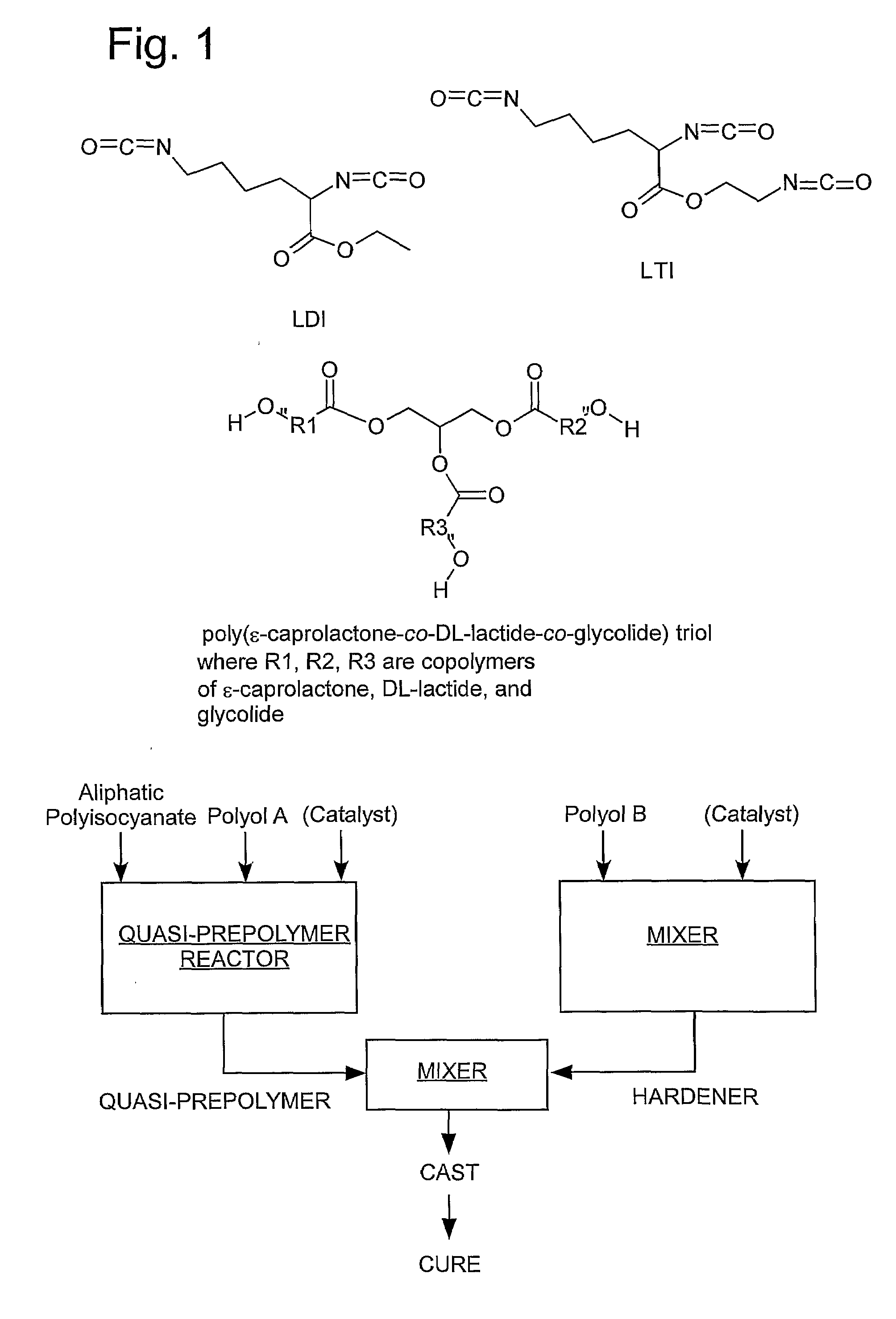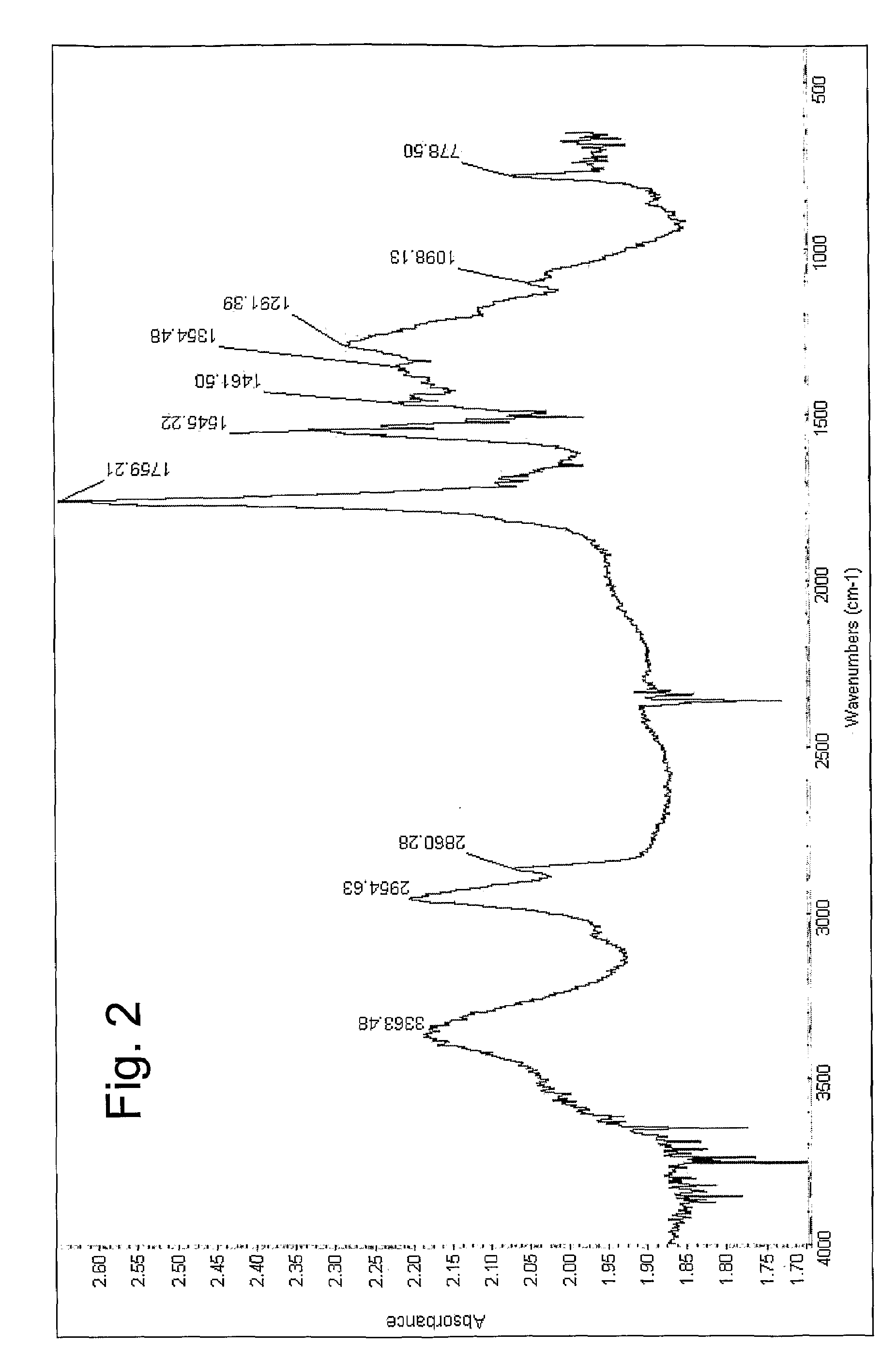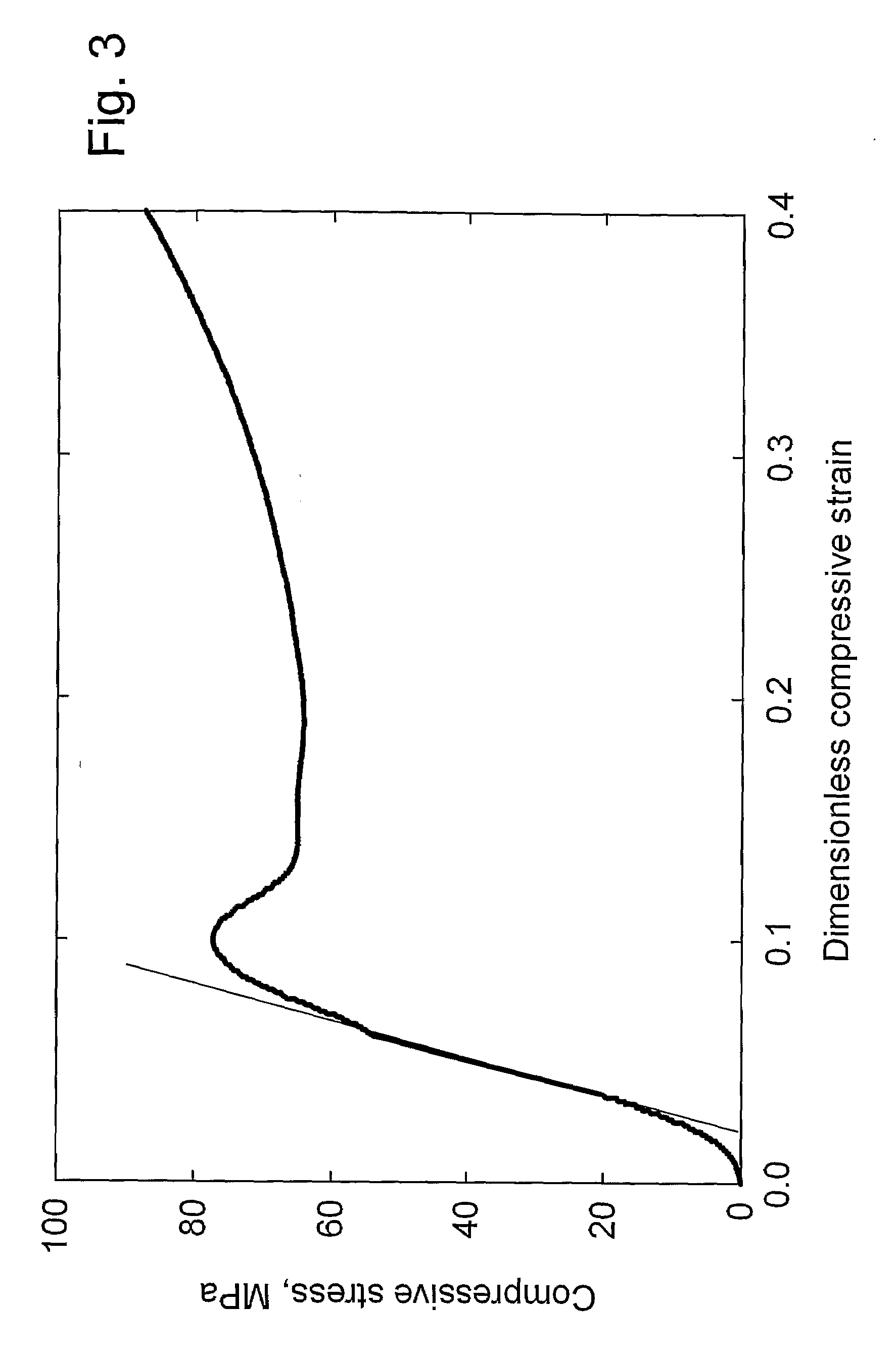Biodegradable polyurethanes
a technology of biodegradable polyurethane and polyurethane, applied in the field of biodegradable polyurethane, can solve the problems of poor mechanical properties, incomplete cure, limited supply,
- Summary
- Abstract
- Description
- Claims
- Application Information
AI Technical Summary
Benefits of technology
Problems solved by technology
Method used
Image
Examples
Embodiment Construction
[0034]As used herein and in the appended claims, the singular forms “a,”“an”, and “the” include plural references unless the content clearly dictates otherwise. All publications, patent applications, patents, and other references mentioned herein are incorporated by reference in their entirety.
[0035]As used herein, the term “biodegradable” refers generally to the ability to be broken down (especially into innocuous degradation products) over time in the environment of use. As used herein, the term “biocompatible” refers generally to compatibility with living tissue or a living system. In that regard, for example, the poly(ester urethane) (PEUR) and degradation products of the present invention are preferably substantially nontoxic and / or substantially non-injurious to the living tissue or living system in the amounts required over the period of contact / exposure. Moreover, such materials preferably do not cause a substantial immunological reaction or rejection in the amounts required...
PUM
| Property | Measurement | Unit |
|---|---|---|
| compressive strength | aaaaa | aaaaa |
| Young's modulus | aaaaa | aaaaa |
| molecular weight | aaaaa | aaaaa |
Abstract
Description
Claims
Application Information
 Login to View More
Login to View More - R&D
- Intellectual Property
- Life Sciences
- Materials
- Tech Scout
- Unparalleled Data Quality
- Higher Quality Content
- 60% Fewer Hallucinations
Browse by: Latest US Patents, China's latest patents, Technical Efficacy Thesaurus, Application Domain, Technology Topic, Popular Technical Reports.
© 2025 PatSnap. All rights reserved.Legal|Privacy policy|Modern Slavery Act Transparency Statement|Sitemap|About US| Contact US: help@patsnap.com



